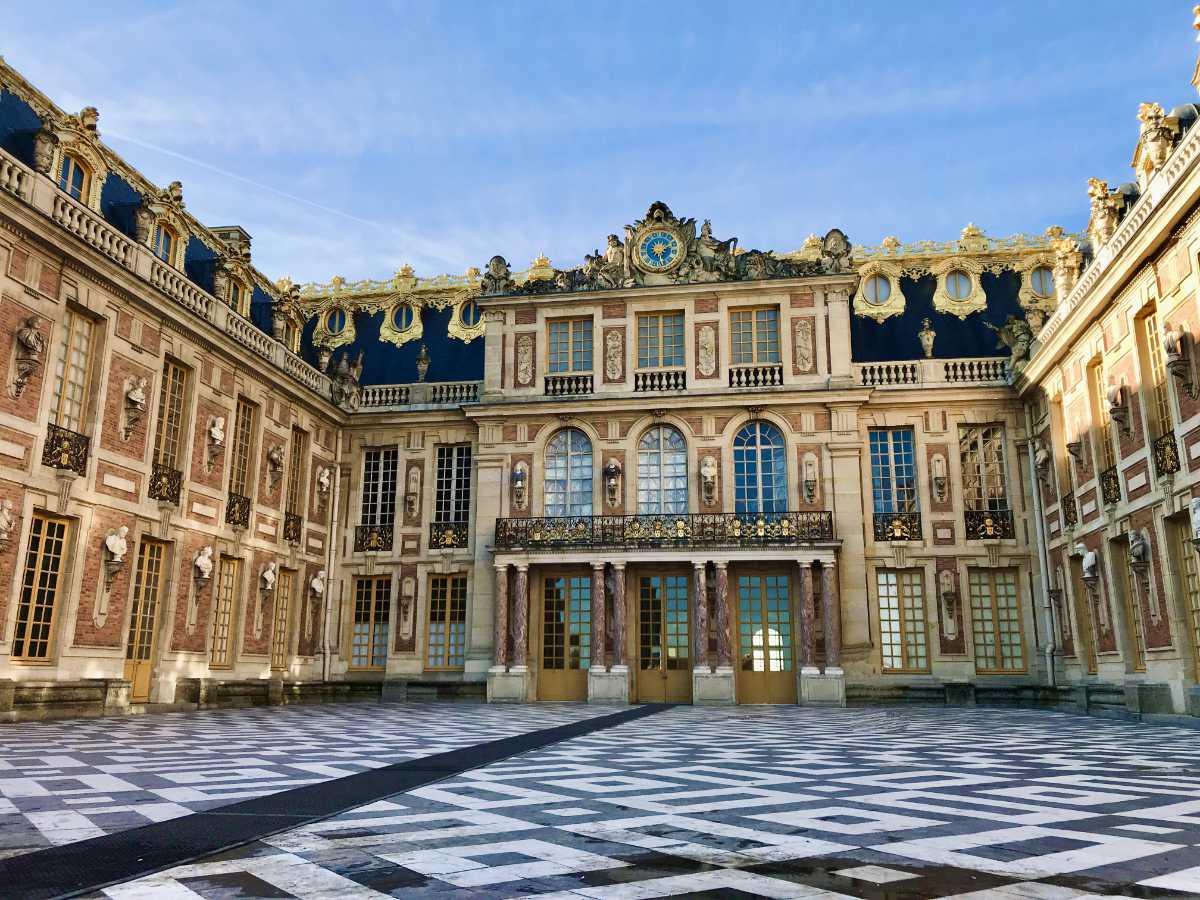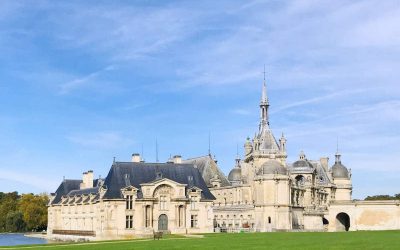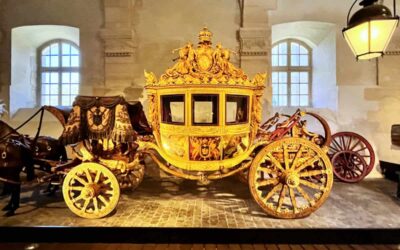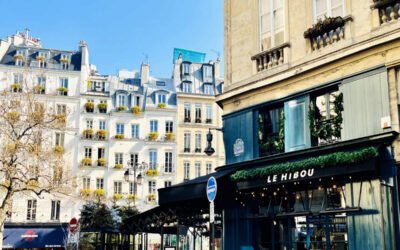Even before you visit the Palace of Versailles (about 1/2 hour from Paris), you know that you will be walking into a world of splendor. Gold plated chandeliers, powdered wigs, extravagant antiques, silk ballgowns, it all hints at an opulence that we don’t see any more these days.
And there’s a good reason for that. The construction of the Palace of Versailles, its subsequent upkeep and profligacy all directly led to the fall of the Royal House of France. Queen Marie-Antoinette may have been its most famous resident, but the seeds of discontent were sown long before her arrival.
Historically in France, large luxurious properties inside the city limits were called Palais (“palace”) while those outside the city were called “château” (“castle”.)
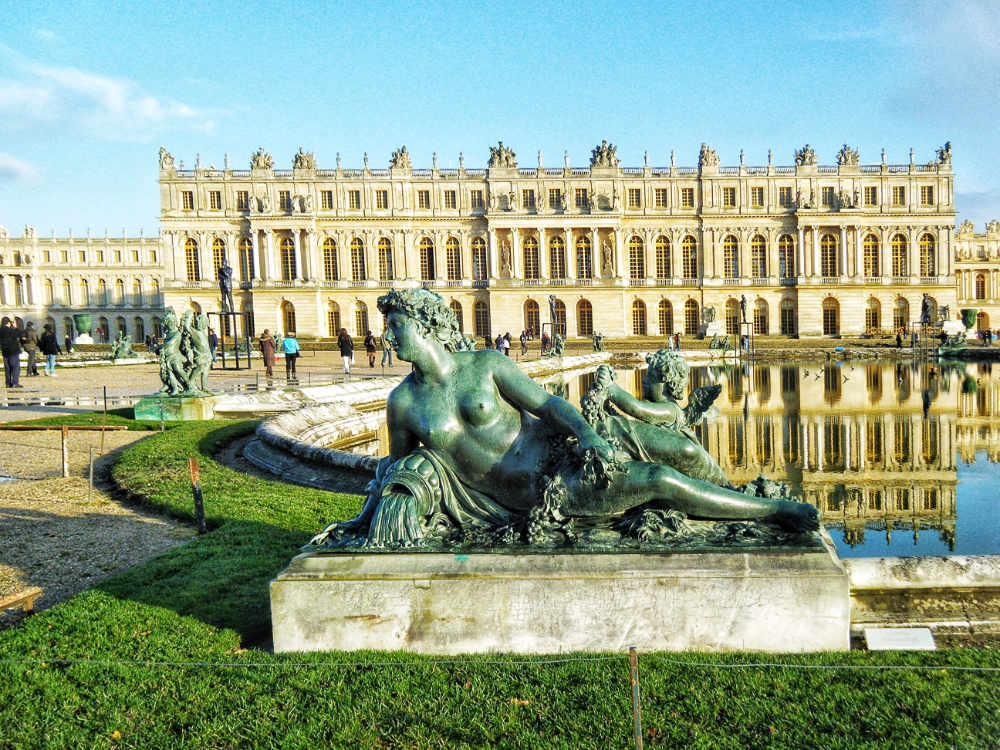
Hence, the building was usually referred to as the Château de Versailles, although these days the city of Versailles is so well developed, it is also called Palais de Versailles.
This guide covers how this magnificent royal palace influenced French history, what is there to see inside the palace and in the gardens, tips for visiting, how to get there, and more.
History
One of the most important buildings in France, the Palace of Versailles is a museum like no other. While it may have started out as a royal palace, today it belongs to the French people and the République of France. And if its walls could talk, they would have quite a history to recount.
i) Construction of a Royal Palace by Sun King Louis XIV
It was actually the Sun King’s dad, Louis XIII, who bought the property at Versailles. When construction started in the 1660s at the Château de Versailles, it was a hunting lodge, a couple of hours away from Paris by horse.
Young Louis inherited it at the age of 5 when he became King, with his mother Anne as Regent. It was a tumultuous time and at one point, the 12-year old Louis and his mother were held prisoner at Palais Royal in Paris (the palace next to the Louvre) until they conceded to the demands of the frondeurs.
This made Louis detest and distrust Paris. At 21, in 1661 young Louis reached his majority, and started to make a few decisions. Instead of the Louvre which was still a royal palace at the time, he immediately looked for a new power base. He settled on the family’s old hunting lodge: Versailles.
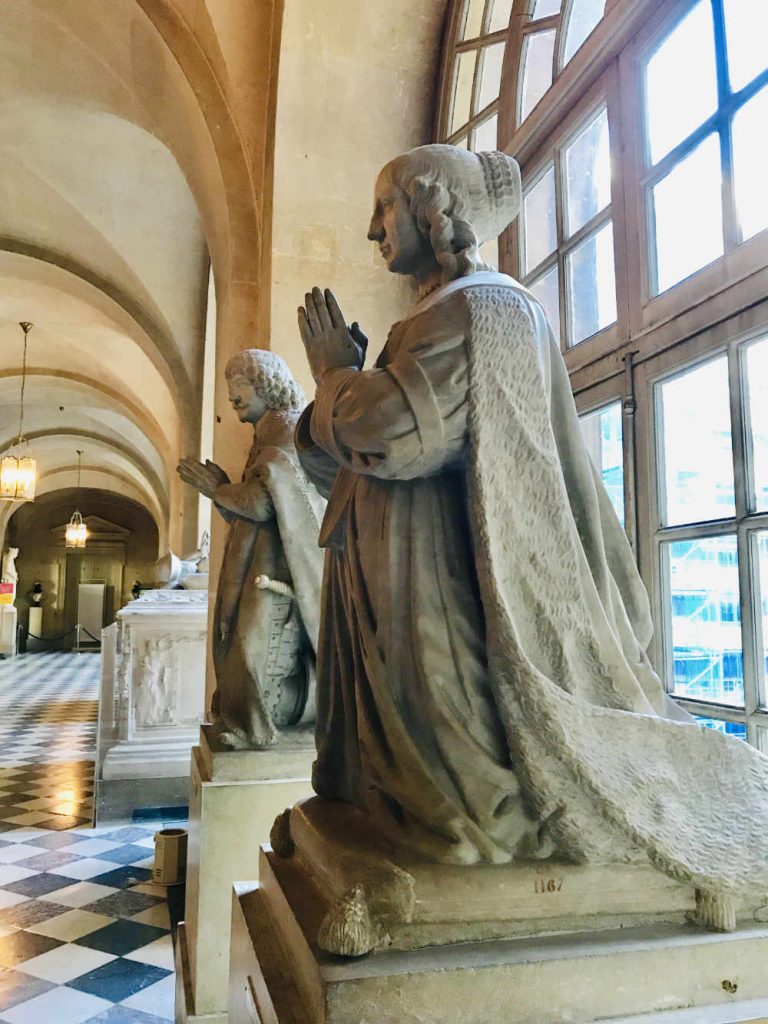
The location was far enough away from Paris that the nobles of the land would have to stay overnight at Versailles, rather than returning to their own homes in Paris. Construction began immediately on a grand scale, adding several wings, new apartments, and new buildings to house the royal court, its servants, and all their hangers-ons.
But Louis was not a kind taskmaster. Workers were expendable if it meant that he could expand bigger, higher, and faster. Thousands of workers died to build the palace (link in French). There was no such thing as workers’ rights.
And while work continued for several decades, the Royal court based itself in Versailles, in the middle of a construction zone.
ii) Downfall of the Palace of Versailles
Palais de Versailles was the capital of elegance by the time Austrian princess Marie-Antoinette married his great-great grandson Louis XVI, more than 200 years later. But France was slowly going bankrupt.
King Louis XVI (16th) had expended a lot of money helping the American Revolutionaries fight their mutual arch-enemy, the British. He tried to impose even more taxes on the poor to raise money.
But for him, the distance from Paris which once was an advantage for the Château de Versailles, was now a drawback. Such extravagant opulence far from the lives of starving Parisians raised their ire.
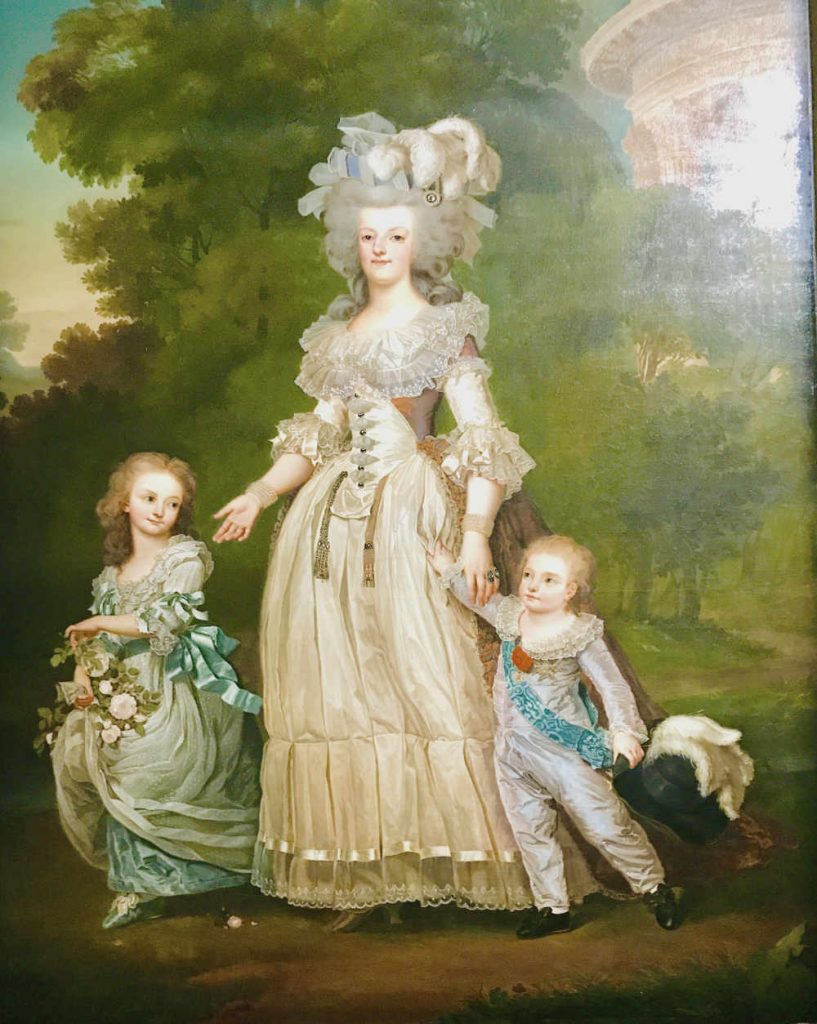
On 5 October 1789, the French people marched to Versailles, and made the Royal Family return to Paris as their prisoners. The King, Queen, and their children would never return. You can read more about the history of the Palace of Versailles and other facts here.
☞ READ MORE: Did Marie Antoinette really say “let them eat cake”?
Inside the Palace
The Palace contains 2,300 rooms spread over 63,154 m2, so as you can imagine, not everything is open to visitors.
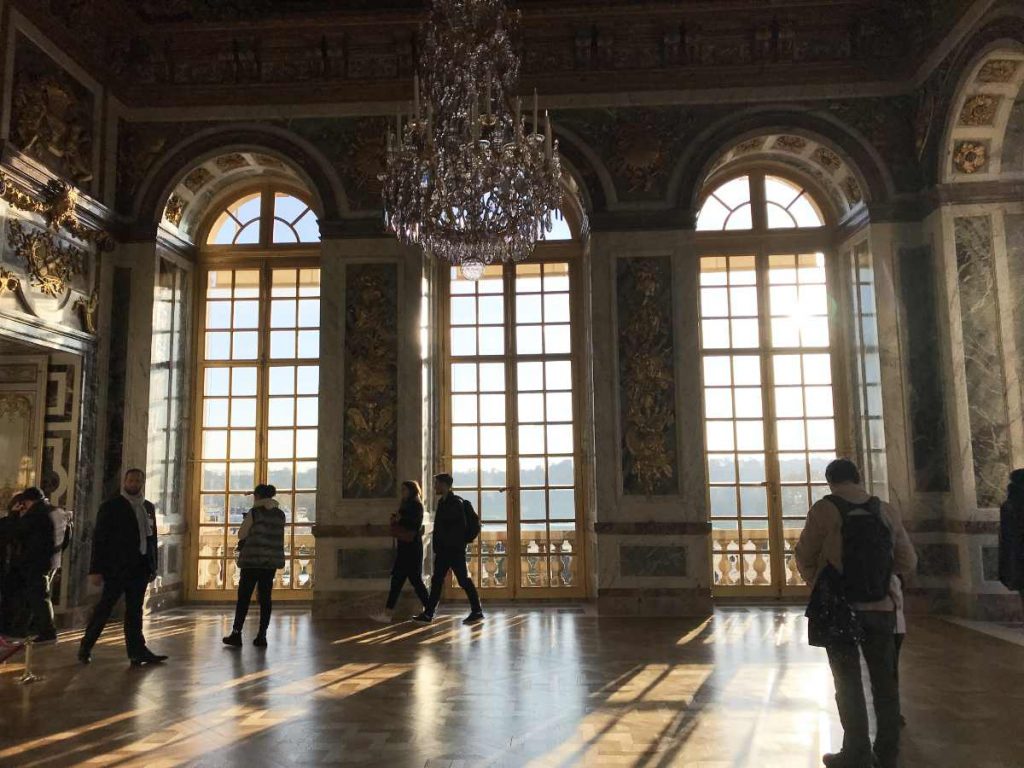
Since millions of people come to Versailles each year, the château recently underwent a large renovation to improve access. Visitors have to follow a set circuit that starts in a large corridor lined with statues. This leads to a large staircase to take you up to the 1st floor (2nd floor in North America).
Once upstairs, you start in a series of rooms for special exhibitions. When I went, the exhibition featured a series of paintings of life at Versailles, along with its famous inhabitants.
Now among the permanent exhibits, the following rooms are must-sees for any visitor:
1. Inner Courtyard
Immediately when you get upstairs, you have a view of the Inner courtyard, where you can imagine the French Kings and Queens looking down upon.
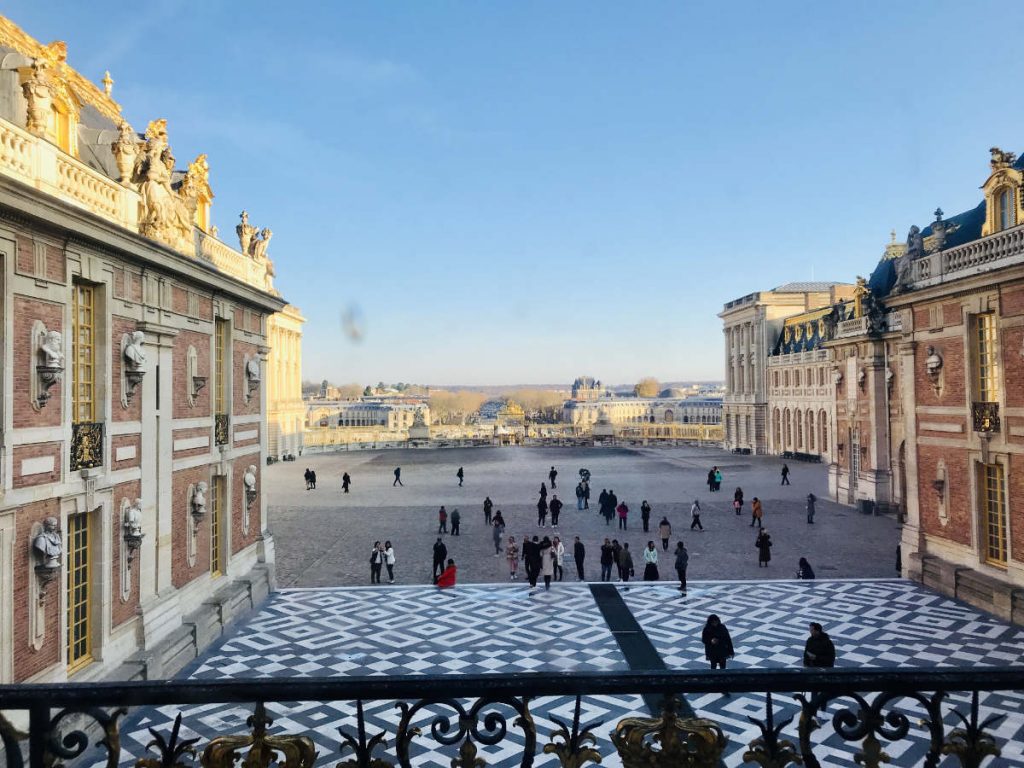
In addition to the royals, certain favored members of the nobility were also given rooms. To get a private room at the Palace of Versailles, you were dependent on being in the Sun King’s good graces.
Versailles was not a pleasant place to be, as one might imagine. Along with other restrictions, Louis XIV imposed a strict dress code, insisting on the finest materials.
This meant that all the nobles of the land spent their money on outfits, bankrupting themselves, instead of being able to pay soldiers to cause trouble. Louis’s plan was worked, and France became the capital of fashion and culture.
2. the King’s State Apartments
The first rooms to visit on the tour are Royal Apartments. The King’s State apartment include a series of 7 rooms interconnected, each ornately decorated from floor to ceiling. Each is named a Roman diety:
- Salon of Hercules
- Salon of Abundance
- Salon of Venus
- Salon of Mercury
- Salon of Mars
- Salon of Apollo
- Salon of Diana
Unlike other palaces that were destroyed during the revolution, the Palace of Versailles was merely ransacked. The valuables were transferred to the Louvre Museum, and other royal property was sold at auction, where foreign kings and lords snapped it up.

Today, you can see some of those pieces at Buckingham Palace or Windsor Castle, and as far away as the Hermitage museum in Russia.
By the time Napoleon Bonaparte became Emperor in 1804, the palace was in bad shape. Napoleon made the Château de Fontainebleau his base instead, distancing himself from the excesses of the previous royal house.
When the monarchy was restored in 1830 following Napoleon’s downfall, the new King Louis-Philippe started to restore Versailles, buying back some of the furniture lost. However walking through these rooms, it is obviously impossible to know which piece of furniture was in which room at the time of King Louis XVI and Marie-Antoinette.
In addition, a lot of the furniture is still being restored at Versailles, as the Château continues to remain a site of rehabilitation.
3. the King’s Private Apartments
While the King would greet dignitaries and diplomats in the State apartments, access to his private apartments was much more restrictive.
As was the case in those days, the closer you could get to the King’s Bedchamber was an indication of how important you were.
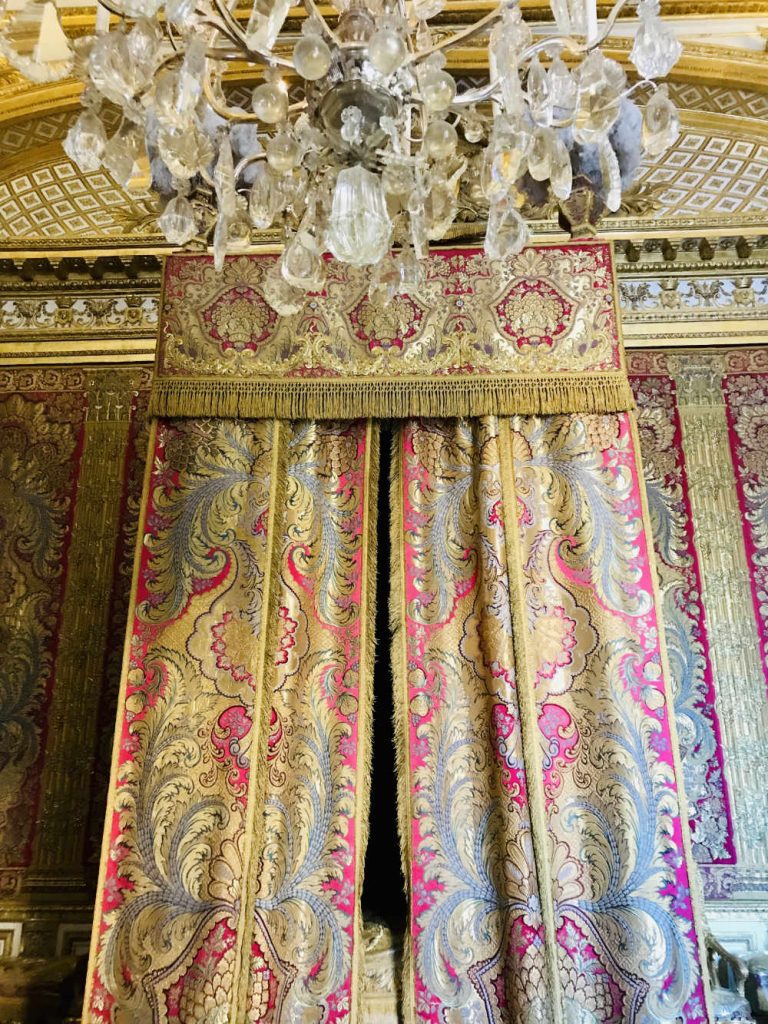
Watching the King perform his levée (waking up and getting dressed ceremony), or couchée (bedtime undressing ceremony), was the highlight of the day for nobles hoping to curry favor with the King.
4. Hall of Mirrors
From there, it is off to the most famous room in Versailles, the Hall of Mirrors. This was a place for meeting and greeting for royal courtiers, nobles and visitors all throughout daily life at Versailles. It was also a place for special occasions such as ceremonies, weddings, or diplomatic receptions.
While it looks beautiful, you have to remember that when Versailles was at its height in the 17th and 18th centuries, there was no running water. In addition, there were very few private rooms for the lords and ladies, and comfort at a minimal.
The place stank since bathing was not common and people would relieve themselves in the corners of the ballroom, since there were no toilets.
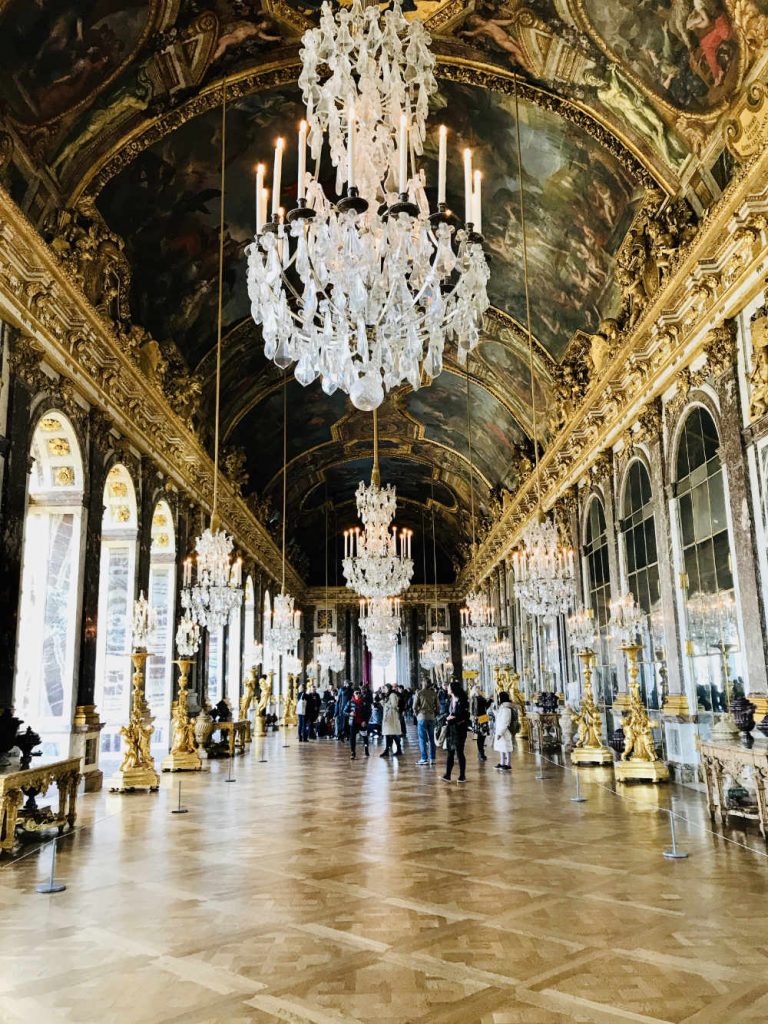
After the French revolution, Versailles remained an important part of history. The following treaties were all signed in the Hall of Mirrors at Versailles:
- 1783 – The Treaties of Versailles where Britain conceded to France and Spain that the United States of America was officially an independent nation. A separate treaty (the Peace of Paris) was signed with the United States.
- 1871 – Treaty of Versailles declaring the end of the Franco-Prussian War and the birth of a new Prussian Empire called Germany.
- 1919 – Treaty of Versailles declaring the end of World War I. France and her Western Allies insisted on the treaty at the site of the previous French humiliation: the Palace of Versailles. The punitive measures in this Treaty against Germany led to the rise of the far-right movement and Hitler.
Thankfully the eye-for-an-eye cycle did not continue, and the surrender of Germany declaring the end of World War II was signed in Reims in France and not Versailles.
Even today, billionaires, businessmen and politicians have been known to rent and use the Hall of Mirrors for private purposes.
5. Queen’s Apartments
Smaller than the King’s apartments, the Queen’s apartments are in a similar layout.
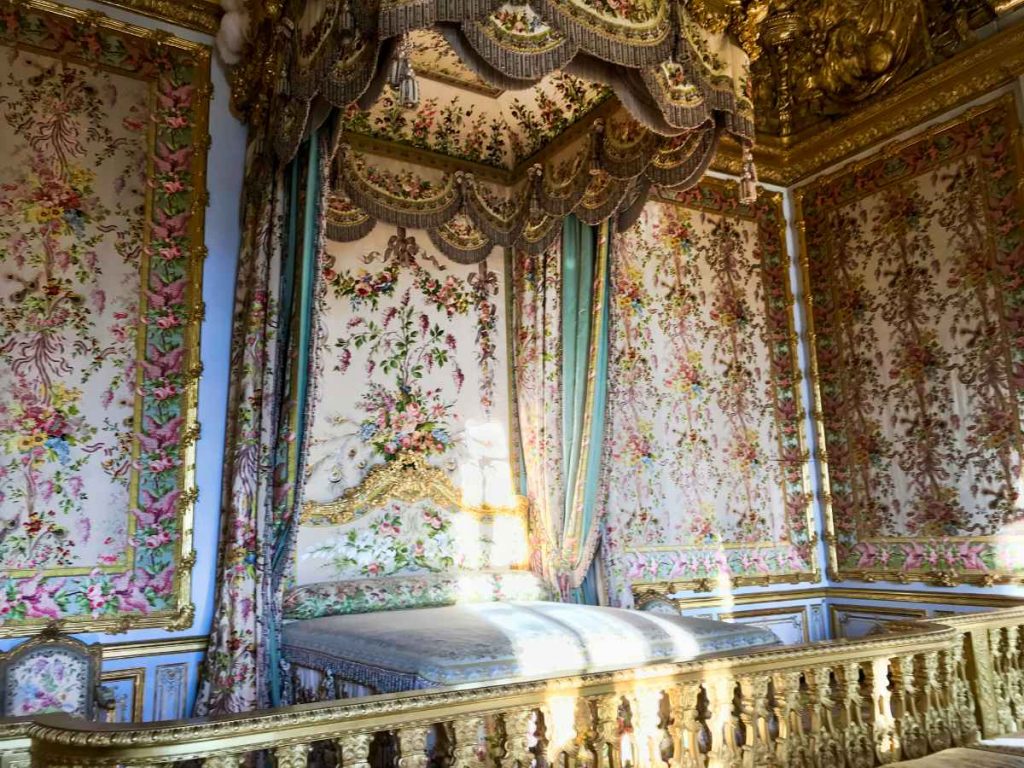
The most important amongst the series of rooms is the bedchamber, where the Queen Consort would give birth to the next generation of royal prince and princesses in the presence of her doctors, ladies-in-waiting, and official witnesses.
As with the King, watching the Queen perform her levée and couchée was reserved for the privileged few.
6. Other Rooms
There is also the Royal Chapel, the Royal Opera house and the Salle de Congrès, although those are not open to visitors. (You can have a peak into the doorway of the Royal Chapel, but you cannot go inside.)
The official residence of the President of France is the Palais de l’Elysée in Paris, not the Palace of Versailles. Nonetheless, Versailles remains an official government building with the Congrés of Versailles still being held in the Salle de Congrès.
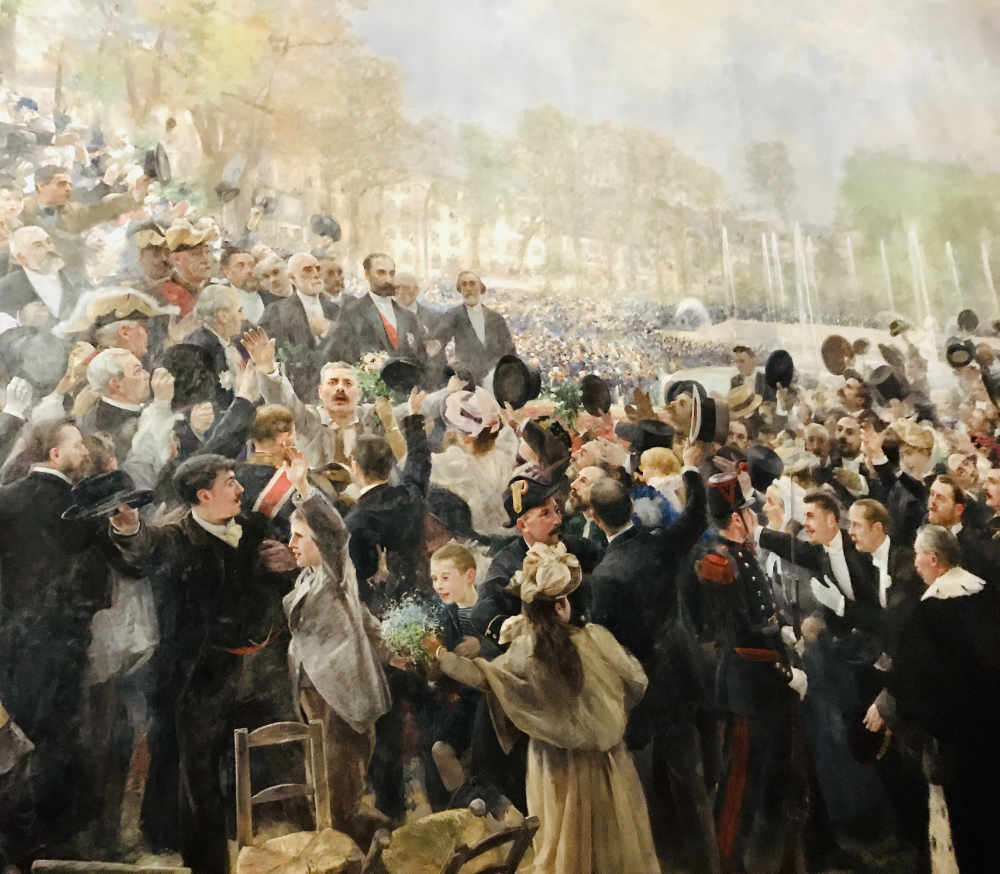
During these occasions, the President of France addresses both houses of Parliament, the Assemblée Nationale (House of Commons) and the Sénat. This is similar to the Queen’s speech in the United Kingdom and the State of the Union in the United States.
Although you cannot currently visit the Salle de Congrès, it remains an important part of the French République.
The Gardens
The gardens at Versailles are huge. I’ve been to Versailles several times, and never managed to see everything in one visit. If you are determined to cover all your bases, I suggest going early and wear good walking shoes.

a) Canal and the Fountains
The Sun King Louis XIV fell in love with the gardens at Chateau de Vaux-le-Vicomte and hired the same engineer Andre le Notre to do the same at Versailles. Except bigger and better. Andre le Notre would go on to also do the gardens at Chateau de Fontainebleau and Chateau de Chantilly.
Andre le Notre designed an elaborate system of hydraulics and canals to bring running water to the Château. The Grand Canal designed by Le Notre is over 1 mile long, and you can even go boating on it. This engineering marvel still exists to this day and continues to power the elaborate fountains.
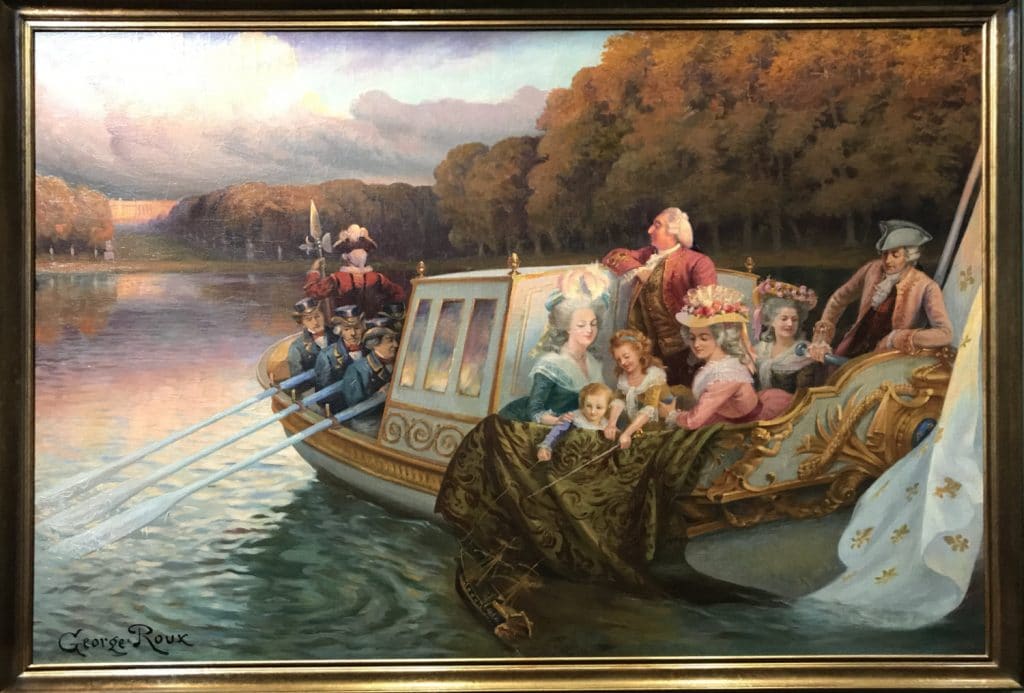
In the off season there are also small rowboats that you can rent for 30-45 minutes to go out onto the grand canals and enjoy a private moment with family and friends.
b) Petit Trianon
The Petit Trianon is a small château within the gardens of the Palace of Versailles. It was commissioned by Louis XV, the great grandson of the Sun King Louis XIV, for his mistress Madame de Pompadour.
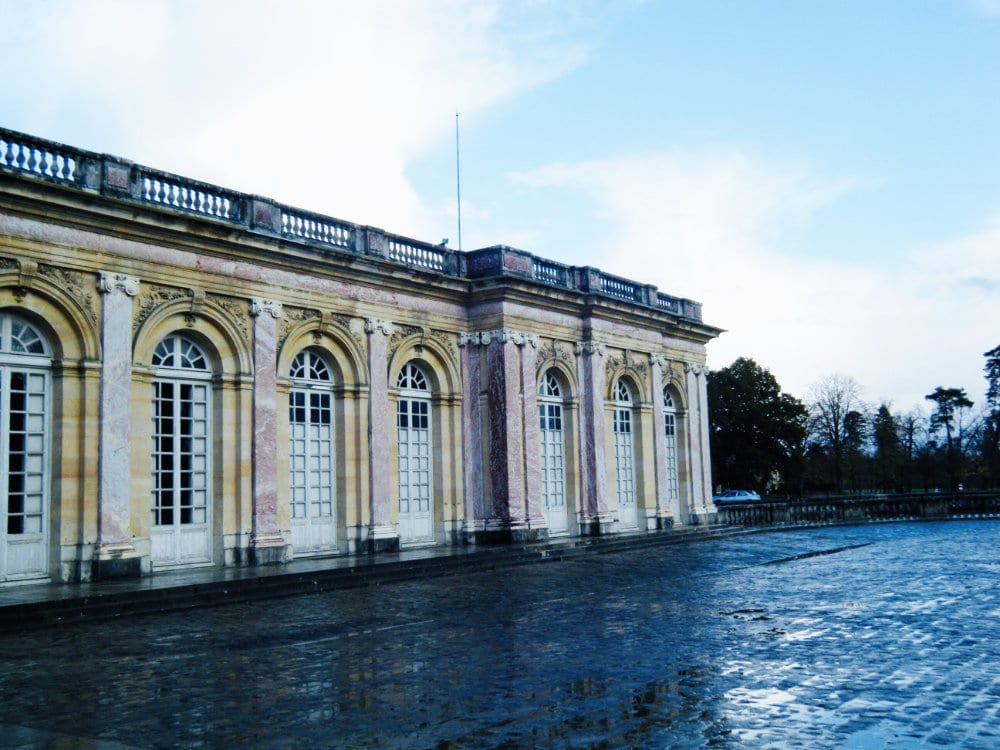
When she died, he simply gave it over to her successor, Madame du Barry. Marie-Antoinette took it over in her time and used it as an escape from the stifling condition in the main Château. It fell into disrepair after the Revolution but was restored by Napoleon’s sister Pauline.
Today the Petit Trianon is open to the public and can be rented for special functions (bring your black platinum credit card).
c) Hameau de la Reine
The “Hameau de la Reine,” was Marie Antoinette’s contribution to Versailles. It was basically a small village with its own farmhouse and dairy mill with cows, hens and sheep. Of course it also came with a staff of hired “peasants” to take care of it all.
d) Coach Gallery (Galerie des Carrosses)
While not in the gardens, the Galerie des Carrosses (Coach Gallery) is located just across from the entrance to the Château. And while the Château has an entrance ticket, the Coach Gallery, that is located a few meters away, has free entry, usually on the weekends.
Inside, you can visit the gala carriages built for Napoleon’s wedding, as well as the burial and coronation carriages of Louis XVIII and Charles X.
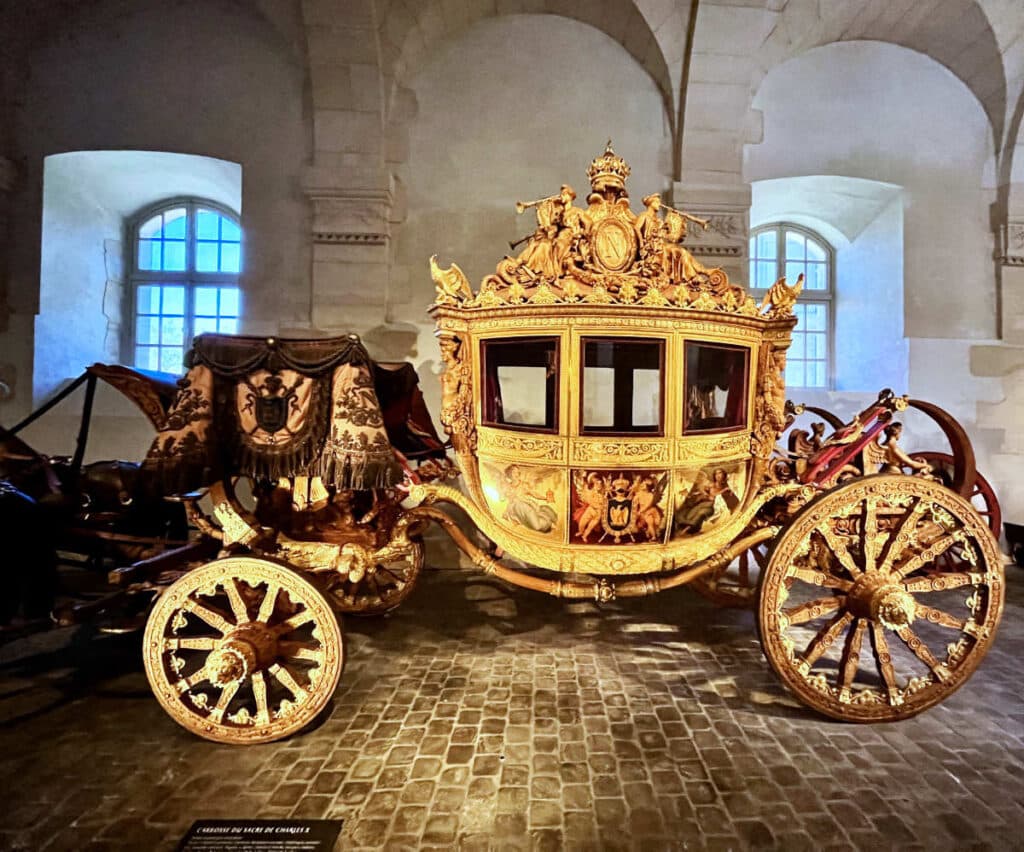
It also holds other carriages from the 3rd Republic and various sleds and sedan chairs for the bourgeoisie from the 18th century.
Getting there
Approximately 10 million people visit Château de Versailles every year, not just because it is beautiful, but also because it is one of the easiest to get to from Paris. Just hop on RER C anywhere in Paris. If you’re not sure where, there are several RER C stations, among them Champs de Mars (Tour Eiffel), Invalides, and Notre Dame.
Take the train in the direction of Saint Quentin-en-Yvelines (South) and get down at Versailles Château – Rive Gauche train station. From here it is a mere 10 minutes’ walk to the Palace, just follow the tourists.
Alternatively, if you would prefer a guided tour from Paris, here are a few options. I would especially recommend this if you are visiting in the summer, as the Palace gets very crowded, and the tour groups are able to skip-the-line.
☞ READ MORE: The French Woman: Style tips for visiting Paris
Best tips for visiting
1. Buy Tickets online
In summer months, the Château is packed. Buy your tickets online in advance and arrive early. There is no airconditioning, so if you can avoid the afternoons, do so.
2. Buy roundtrip tickets for the train
If you are taking the RER train to Versailles from Paris, be sure to buy round-trip tickets to avoid queuing up at the end of the day with all the other people leaving Versailles.
3. Accessibility inside the Palace
Strollers are not allowed inside the Château, but you are free to leave them in a locker at the entrance and recuperate them before heading over to the gardens. Backpacks and carriers with metal frames are also not allowed in the Palace.
When we went the elevators inside the Château were blocked, so be prepared to take the stairs. I did see people in wheelchairs though, so you may need to ask for special assistance.
4. Food options and where to eat
There is a Michelin-starred restaurant by renowned French chef Alain Ducasse inside the Château called Ore.
If that doesn’t quite fit in your budget, there is also a café called Grand Café d’Orléans where you can either bring your own food (very practical when traveling with small children), or buy from the counter.
There is also a beautiful teahouse style restaurant in the gardens called La Petite Venise. However, if your little revolutionaries are tired from walking in the Palace, they are not going to want to trek all the way here to eat.
If the weather is good, you are also welcome to eat in the Château’s extensive gardens. Locals often access the gardens to picnic, exercise, or just take in the greenery, so don’t hesitate pick up a few groceries at a supermarket nearby and have yourself a French-style picnic.
5. Dress appropriately
Another point about visiting the gardens is that unless you are going in the middle of summer, it tends to be quite cold. Paris is often quite rainy so bring a warm waterproof jacket.
Also, there is quite a bit of walking, from the RER train station to the Palace of Versailles and within its grounds, so comfortable shoes are a must.
6. Avoid the crowds
If you are visiting in peak season, try to get to the Palace early as it gets quite busy mid-morning and in the afternoons as more and more tour groups arrive.
Even if it is not the summer, crowds can be substantial around French holidays, especially in May and end of October.
Another way to avoid the crowds if you are not a morning person, is to go in the afternoon and visit the gardens first. You can then visit the inside of the palace towards the end of the day after 4pm when the crowds lessen.
7. Get the audioguide
If you don’t already have a tour guide, get the audio guide which comes in 11 languages as you move through the rooms. You can also download the Château de Versailles application, if you prefer to use your own telephone.

So what do you think, is all the splendor of Versailles worth all that it cost France and her people? The tumultuous events that occurred here cost a lot of lives and heartache. Will you look at it differently when you visit?
If you enjoyed that article, you may enjoy a walking tour of Paris, with a French Revolution theme, or like to read more about other day trips from Paris. A bientôt.
